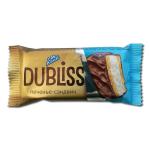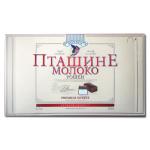
Other names for the additive (synonyms)
General Information
Food additive E406 (Agar) is a gelling agent used in the food industry as a stabilizer, thickener, and texturizer. Agar is widely used in food production to create gel-like textures, stabilize consistency, and prevent product separation.
Agar is of natural origin and is obtained by extracting polysaccharides from red algae of the families Gelidiaceae and Gracilariaceae, as well as other representatives of red algae (Rhodophyceae) found in the Pacific Ocean and the White Sea.
Agar was first described by German microbiologist Walther Hesse in 1884 as a culture medium for growing bacteria in microbiological research.
Additive E406 is a hydrophilic colloidal polysaccharide with the chemical formula (C12H18O9)n. It appears as a yellowish powder or flakes containing mineral salts, water, and 80% polysaccharides.
Agar does not dissolve in cold water. Dissolution of additive E406 occurs only at temperatures of 95–100 °C. Upon cooling the solution to 35–40 °C, agar forms a thermoreversible gel that liquefies again when reheated.
In the food industry, agar is produced through water extraction from dried algae, followed by purification, filtration, and drying. The production process ensures compliance with the purity criteria established by Regulation (EU) No 231/2012.
Effects on the Body
Benefits of additive E406
Agar is not a substance naturally present in the human body; however, due to its polysaccharide nature, it functions as dietary fiber, supporting digestive health. As it passes through the intestines, agar is partially fermented by gut microbiota, producing short-chain fatty acids (SCFA) considered beneficial for intestinal health.
Risks of additive E406
There is no evidence of toxic effects of agar on the human body. According to the EFSA 2016 assessment, agar is poorly absorbed and excreted unchanged. Studies by the U.S. National Toxicology Program (NTP) found no adverse effects in mice and rats at doses up to 4.5 g/kg body weight per day.
EFSA found no genotoxic activity of agar. Carcinogenicity studies showed no increase in tumor incidence in animals. JECFA also concluded that it is not necessary to establish an Acceptable Daily Intake (ADI) for agar. EFSA reached a similar conclusion, noting no health risk to the general population at current consumption levels.
Excessive consumption of agar may have a laxative effect. Its use is contraindicated in individuals with intestinal stenosis.
Uses
In the food industry, additive E406 is used as a thickener, stabilizer, gelling agent, and carrier. It is applied in the production of confectionery products (marshmallows, fruit jellies, jams, candy fillings), dairy products (yogurts, ice cream), bakery products, condensed milk, mayonnaise, as well as in diabetic foods and chewing gum.
Agar is used for clarifying beverages, in the production of vegetable and fruit preserves, beer, meat, and fish canned goods. In South Asia, agar is a popular gelatin substitute.
Beyond the food industry, agar is used in:
- Microbiology — for the preparation of culture media;
- Medicine — as a laxative in high doses;
- The chemical industry;
- Pharmaceuticals;
- Cosmetic products.
Legal Status
Additive E406 is authorized for use in the food industry in the European Union under Regulation (EC) No 1333/2008 and complies with the purity criteria defined in Regulation (EU) No 231/2012.
In Ukraine, additive E406 is permitted as a safe food additive according to national legislation harmonized with EU standards.
In the United States, agar is recognized as safe (GRAS) and approved by the FDA for use in food products. JECFA has assigned it an ADI status of "not specified," indicating its safety at normal consumption levels.
In Canada, Japan, and most other countries, agar is also officially approved for use in the food industry.



